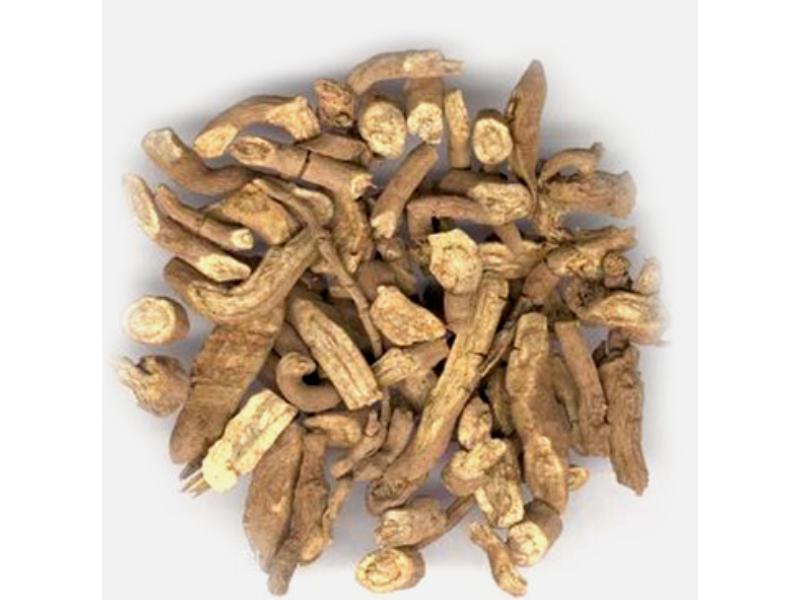Search in medicinals
Aristolochiae Radix
Aristolochia root
青木香1 〔青木香1〕 qīng mù xiāng1

Alternate English names: birthwort root
Kingdom: Plant
Origin in PRC Pharmacopoeia: Aristolochia debilis Sieb. et Zucc.
Origin in unofficial sources: Aristolochia debilis Sieb. et Zucc.*; Aristolochia contorta Bge.; Aristolochia kaempferi Willd.; Aristolochia chuii C.Y. Wu
Use: Medicinal
Category: Qì-rectifying agents
Properties: Acrid and bitter; slightly cold.
Channel entry: Liver and stomach channels.
Actions and indications:
- Moves qì and relieves pain: Distension and pain in the chest, rib-side, and abdomen due to liver-stomach qì stagnation.
- Resolves toxin and disperses swelling: Sand distension (shā zhàng) with abdominal pain;
venomous snake bites .
Dosage and method: Oral: Decoct (3–10g) or use in powders (1.5–2g). Topical: Apply ground.
Warnings: Use with care in vacuity cold.
Notes: The term qīng mù xiāng 青木香 is also an alternate name for mù xiāng 木香.
Quality: Large firm roots that are farinaceous in texture and that have a strong aroma are best.
Production area: Zhèjiāng, Jiāngsū, ānhuī, and to lesser extent in Guǎngxī, Húnán, and Húběi.
See: Mù xiāng (木香 Aucklandiae Radix, costusroot); Chuān mù xiāng (川木香 Vladimiriae Radix, common vladimiria)
Back to search result Previous Next